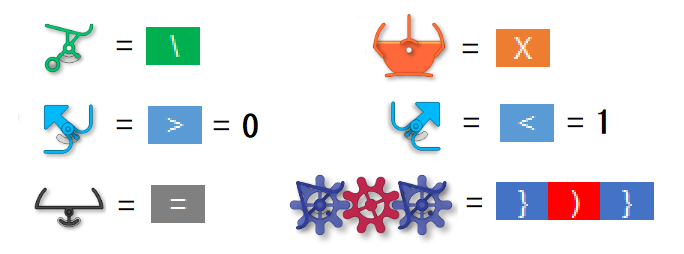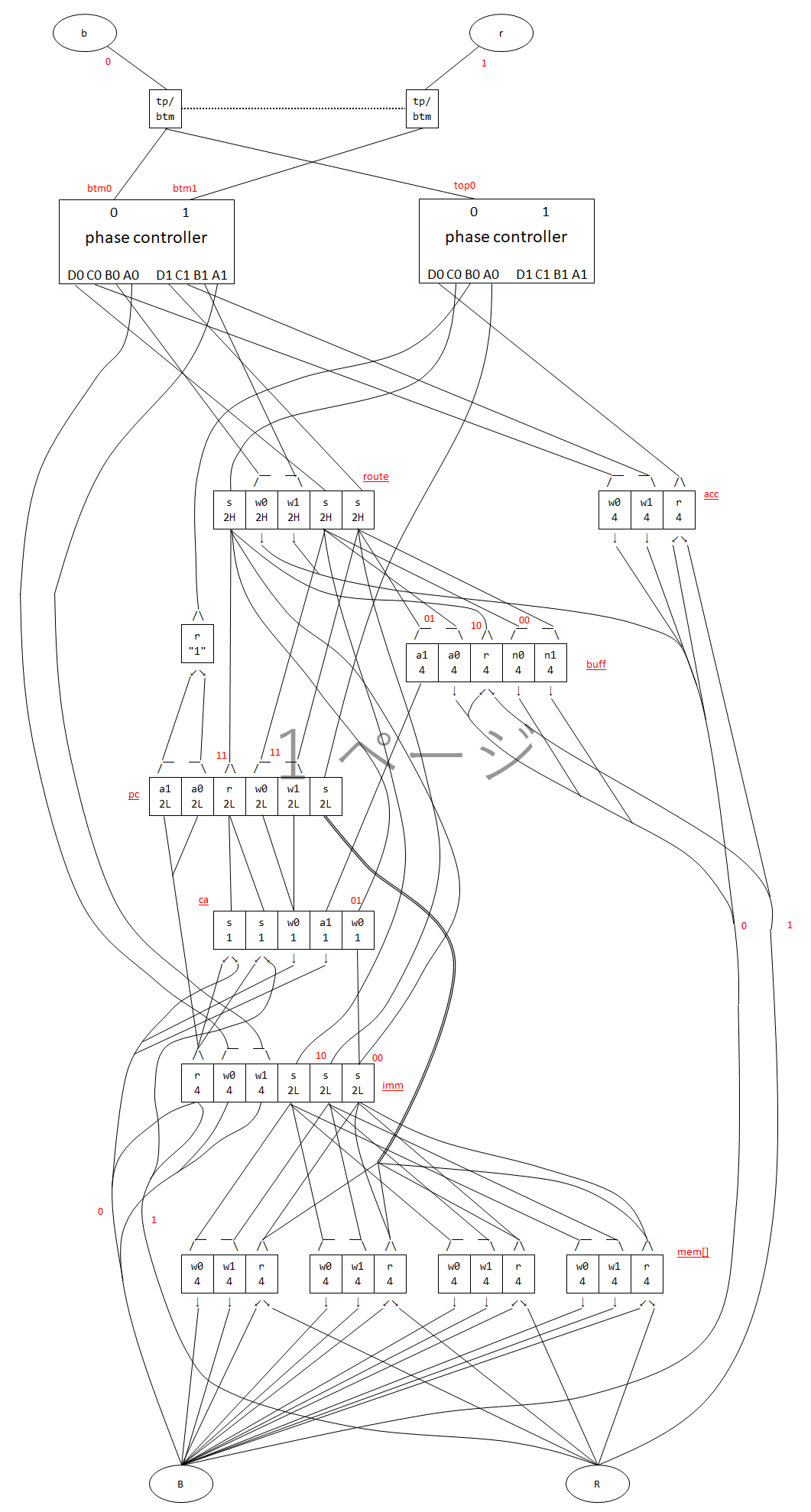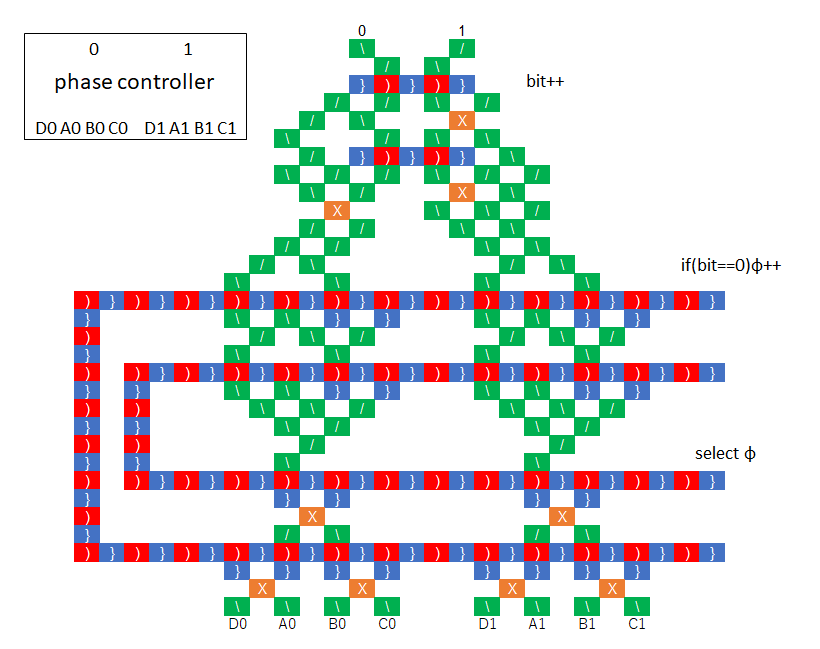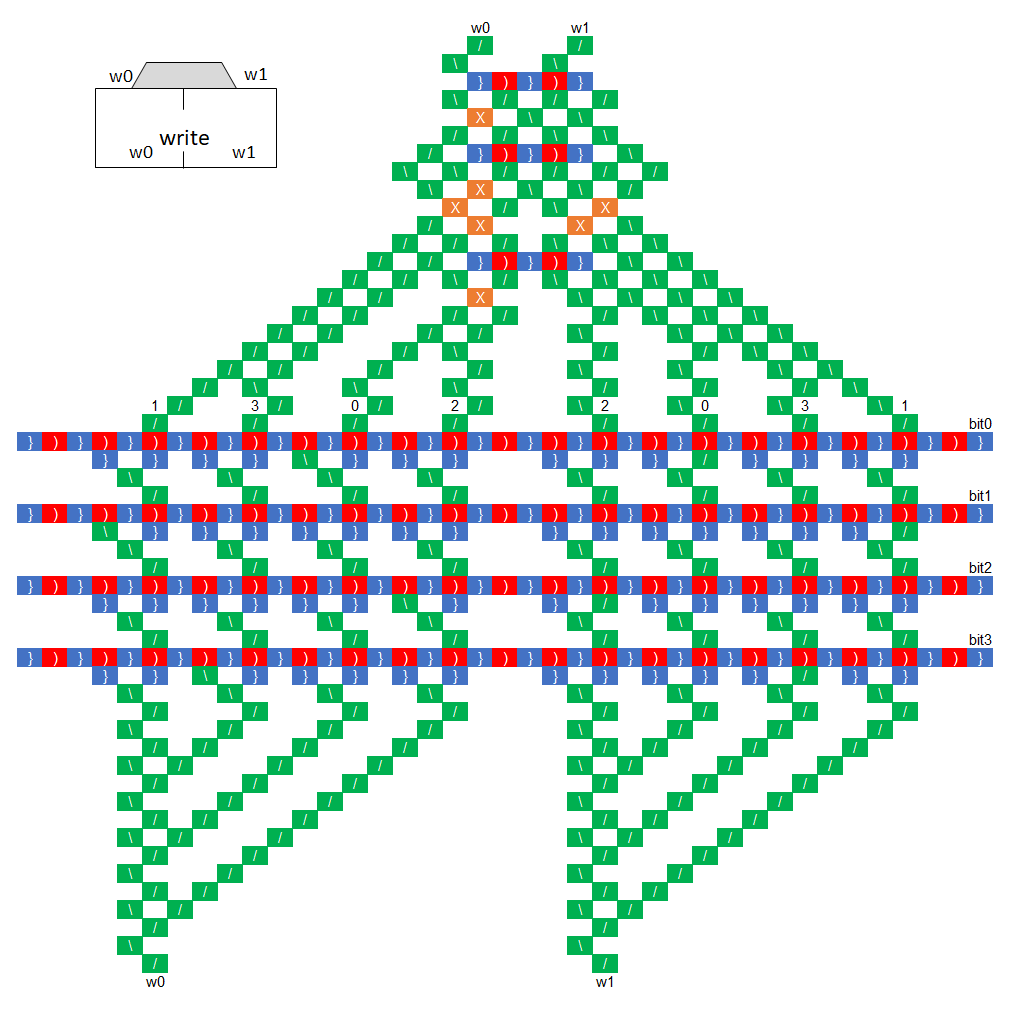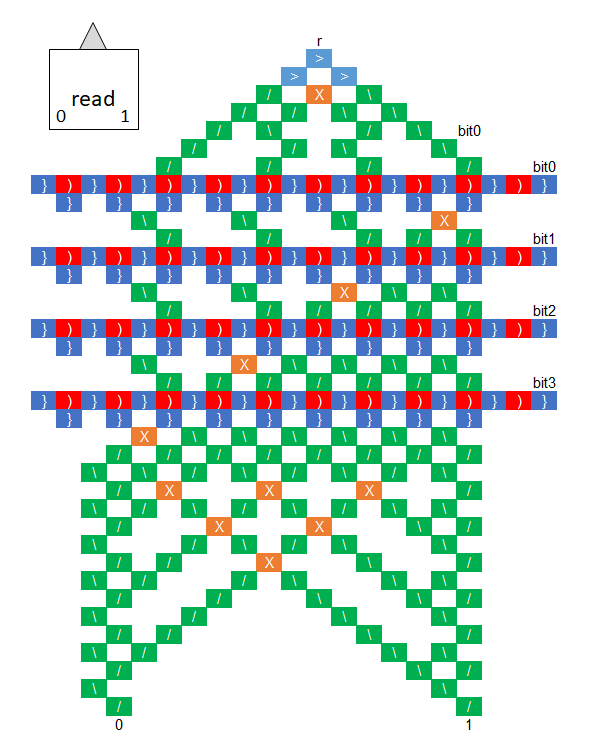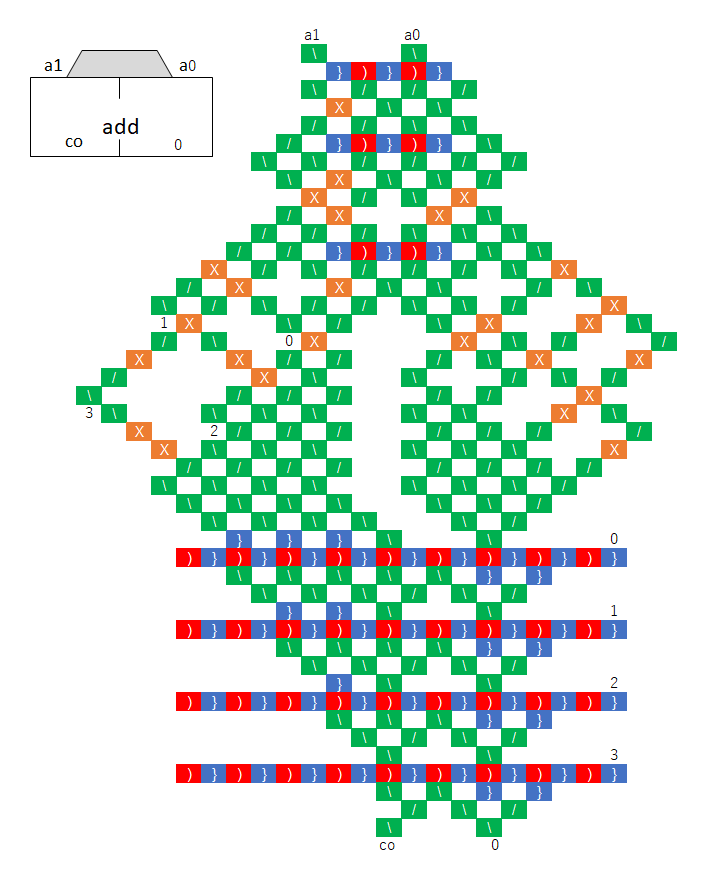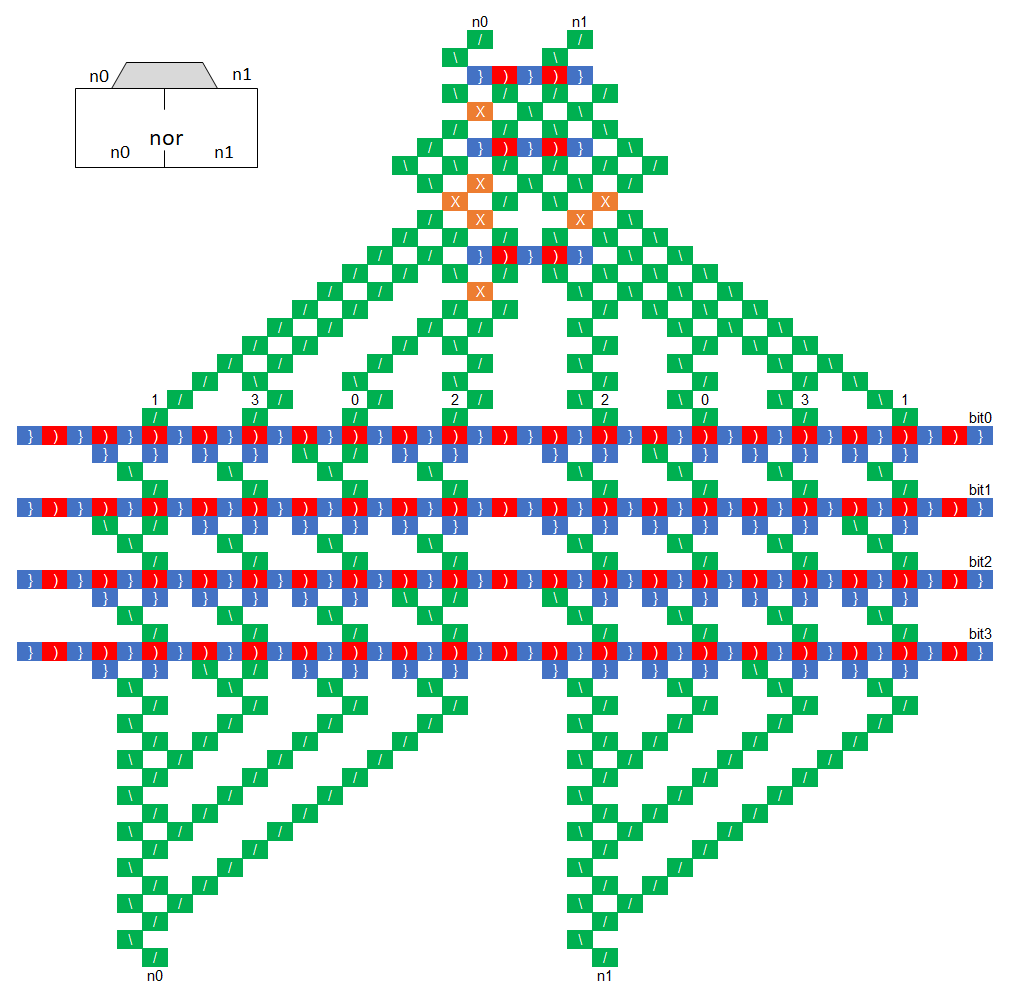The operation is briefly described below.
Referring to the BBS(Turing Tumble Difference Engine) and puzzle books(challenge 38, challenge 56), I came up with a way to put the serial information on the ball and transfer it to the memory bit in the upper position.
Carefully examine the structure of the MCPU and move the variables in a total of four separate phases.
For each bit in each phase, divide it into top and bottom. In the top , convert the bits to the color of the ball, and in the bottom, convert the color of the ball to the bits.
The details of each phase are as follows. Pseudo-code is used for explanation.
ph1:
imm = mem[pc];
ph2:
pc += 1; route = H(imm);
ph3:
if(route == 00){
buff = mem[L(imm)];
}else if(route == 01){
co = 0; buff = mem[L(imm)];
}else if(route == 10){
buff = acc;
}else if(route == 11){
buff = pc; if(co == 0) buff = imm;
}
ph4:
if(route == 00){
acc = acc NOR buff;
}else if(route == 01){
co += H(acc + buff); acc = L(acc + buff);
}else if(route == 10){
mem[L(imm)] = buff;
}else if(route == 11){
pc = L(buff); co = 0;
}
The ball follows the route in the following order from the first pitch.
phase1.bit0.top
phase1.bit0.bottom
phase1.bit1.top
:
phase1.bit3.bottom
phase2.bit0.top
:
phase4.bit3.bottom
In other words, one instruction is executed for 32 balls.
